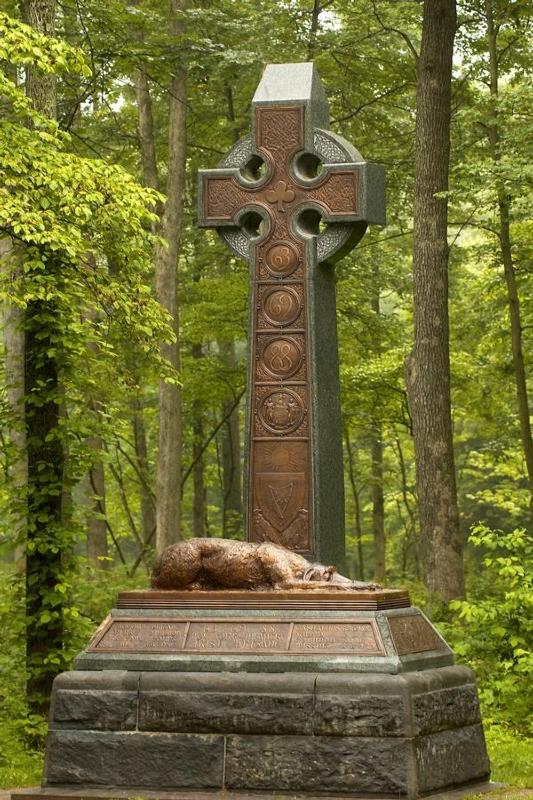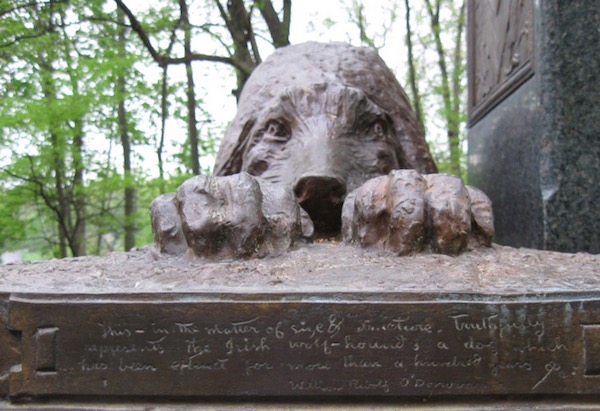
The Irish Brigade was one of the legendary units of the American Civil War, its infantry made up of predominantly Irish Americans who served on the Union side, Their famous war cry was “Faugh a Ballaugh,” an anglicization of the Irish phrase, fág an bealach, meaning “clear the way.”
They fought hard and were a force with which to reckon when they were thrown in to support General Daniel E. Sickles’ collapsing line at Gettysburg, this after Sickles had disobeyed General George Meade’s orders to occupy Little Round Top and advanced to the Peach Orchard, instead. Under the command of Col. Patrick Kelly, the Irish Brigade was sent to stabilize the Wheatfield/Rose Farm area. Before the attack, the men knelt while the Brigade Chaplain, Father William Corby, stood atop a boulder and gave general absolution to the men.
Half the men never returned. Of all Union army brigades, only the 1st Vermont Brigade and Iron Brigade suffered more combat dead than the Irish Brigade.
Ironic that after the war, Daniel Sickles’ role was to oversee the placement of monuments to all New York regiments and batteries on the battlefield, and that one of the most poignant monuments in all of Gettysburg – the Irish Brigade Monument – is located on Sickles Avenue south of Gettysburg in the Rose Woods. It marks one of the positions held by the Irish during the second day of the battle.
The monument dedicated on July 2nd, 1888 is a 19 foot tall Celtic cross supported by a granite base. Sculpted by William R. O’Donovan, a former Confederate soldier who fought at Gettysburg, the cross has at its base a life sized Irish Wolfhound, symbol of honor and fidelity. Below the front paws of the Wolfhound is the inscription: “This, in the matter of size and structure, truthfully represents the Irish wolf-hound, a dog which has been extinct for more than a hundred years” ¹ – William Rudolph O’Donovan.

In attendance at the dedication was the same Father William Corby who’d given absolution before the battle. He held a mass for the veterans and blessed the monument. He said, “We have unveiled this pile, and it will stand to perpetuate the fame of those heroes. To keep their memory green in the American heart, this Celtic Cross has been erected. It is an emblem of Ireland, typical of faith and devotion, and the most appropriate that could be raised to hand down to posterity the bravery of our race in the great cause of American liberty.”
Often described as the war’s turning point, the battle that resulted in a Union victory involved the largest number of casualties of the entire war. In all, a staggering 6,600 men were killed, 33,000 wounded and 12,000 missing or captured, the losses were about equal on both sides.
Note 1: It’s not known why William Rudolph O’Donovan believed the Irish Wolfhound to be extinct, though it is true that by 1800, the breed was low in numbers. Convinced that there were still a few Irish Wolfhounds left in Ireland, but Capt. George A. Graham made it his mission to find them in the mid-1800s.
Image of entire monument from Wikicommons. Detail of monument front from Civil War Arsenal (no copyright mark)
